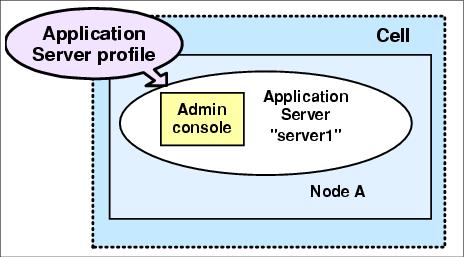Understanding WebSphere Application Server v7.0 profiles
The concept of server profiles was introduced starting with WebSphere Application Server v6.0. The WebSphere Application Server installation process simply lays down a set of core product files required by the runtime processes. After installation, you have to create one or more profiles that define the runtime settings for a functional system. The core product files are shared between the runtime components defined by these profiles.
With WebSphere Application Server Base and Express Editions, you can only have standalone application servers (Figure | 2-2). Each application server is defined within a single cell and node. The administration console is hosted within the application server and can only connect to that application server. No central management of multiple application servers is possible. An application server profile defines this environment.

Figure 22-2 System management topology: Standalone server (Base and Express)
You can also create standalone application servers with the Network Deployment package, though you would most likely do so with the intent of federating that server into a cell for central management at some point.
With the Network Deployment package, you have the option of defining multiple application servers with central management capabilities. For more information about profiles for the IBM WebSphere Application Server v7.0 Network Deployment Edition, refer to WebSphere Application Server V6.1: Systems Management and Configuration, SG24-7304.
|
ibm.com/redbooks |